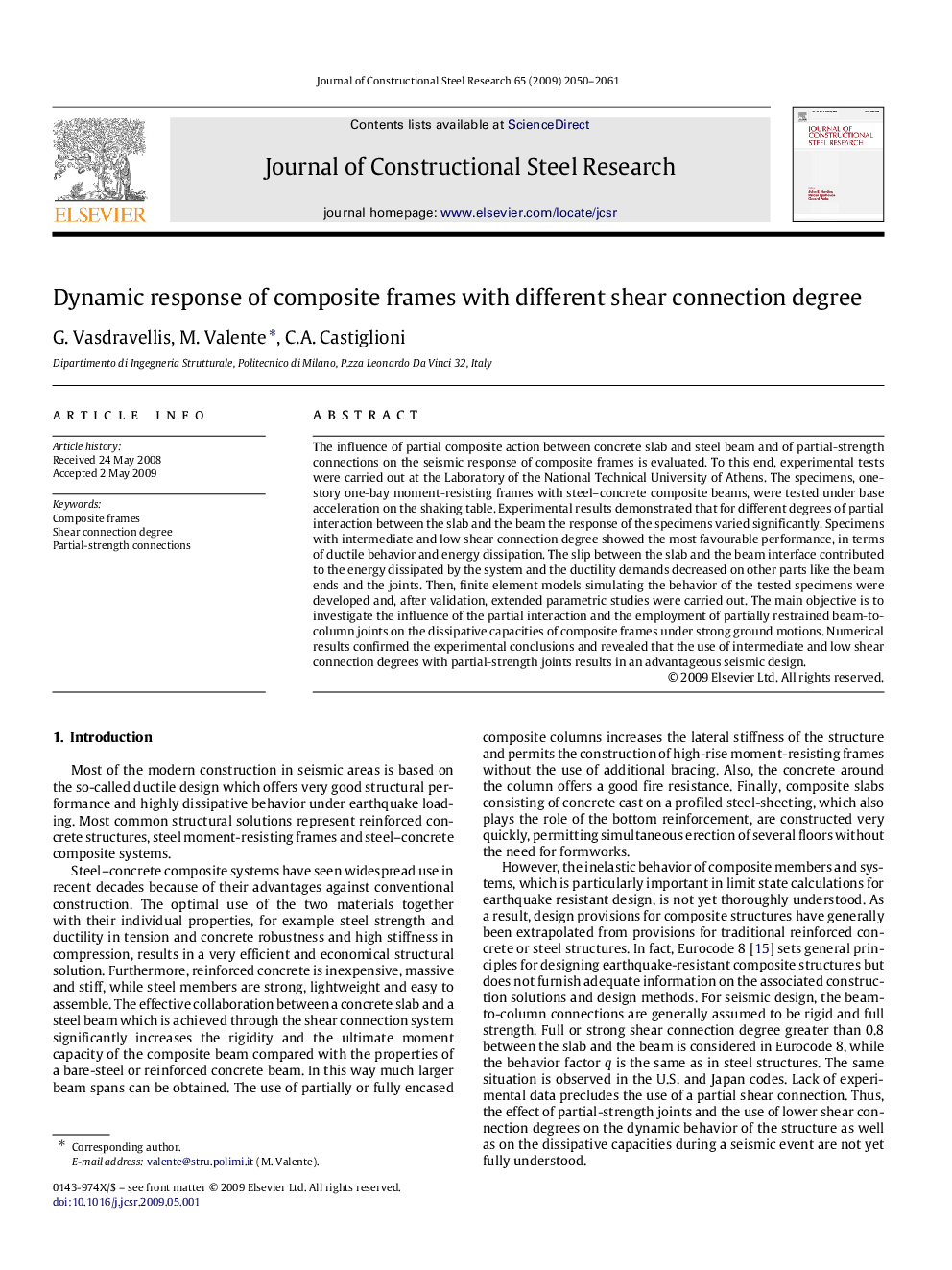| کد مقاله | کد نشریه | سال انتشار | مقاله انگلیسی | نسخه تمام متن |
|---|---|---|---|---|
| 285888 | 509222 | 2009 | 12 صفحه PDF | دانلود رایگان |

The influence of partial composite action between concrete slab and steel beam and of partial-strength connections on the seismic response of composite frames is evaluated. To this end, experimental tests were carried out at the Laboratory of the National Technical University of Athens. The specimens, one-story one-bay moment-resisting frames with steel–concrete composite beams, were tested under base acceleration on the shaking table. Experimental results demonstrated that for different degrees of partial interaction between the slab and the beam the response of the specimens varied significantly. Specimens with intermediate and low shear connection degree showed the most favourable performance, in terms of ductile behavior and energy dissipation. The slip between the slab and the beam interface contributed to the energy dissipated by the system and the ductility demands decreased on other parts like the beam ends and the joints. Then, finite element models simulating the behavior of the tested specimens were developed and, after validation, extended parametric studies were carried out. The main objective is to investigate the influence of the partial interaction and the employment of partially restrained beam-to-column joints on the dissipative capacities of composite frames under strong ground motions. Numerical results confirmed the experimental conclusions and revealed that the use of intermediate and low shear connection degrees with partial-strength joints results in an advantageous seismic design.
Journal: Journal of Constructional Steel Research - Volume 65, Issues 10–11, October–November 2009, Pages 2050–2061